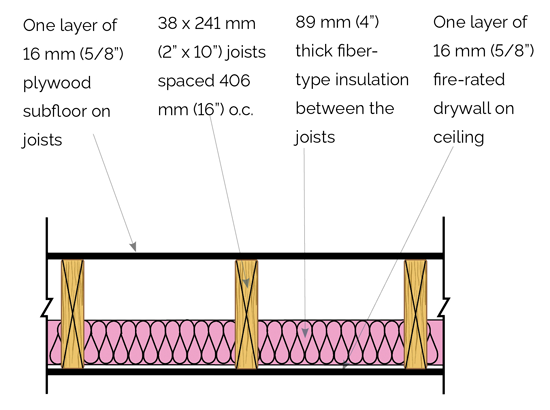
Trade-off path requires a calculation to demonstrate that while your proposed design may not exactly meet the prescriptive requirements found in Section 9.36 overall, the amount of energy consumed will be the same or less than would be consumed by following strict prescriptive compliance. Trade-off path If you need more flexibility in your design, a trade-off path allows you to trade elements within the above ground building envelope to demonstrate an equivalent level of performance without meeting every prescriptive requirement found in 9.36.2. If this is impossible or undesirable, another compliance path should be selected. It is important to note that prescriptive path compliance for any part of the 9.36 requires meeting all requirements in that part. It is typically the simplest compliance path to follow, but may not be appropriate for all buildings. This path involves following the prescriptive requirements of Subsection 9.36.2, 9.36.3 and 9.36.4. The various compliance path types are prescriptive, trade-off, and performance compliance. This is a critical decision for the designer and can affect both submission requirements and team members. Unlike Alberta’s safety codes, there are several paths that you can choose to demonstrate compliance with Section 9.36. We’re committed to providing you with a timely response on your permit application. These requirements became mandatory on Nov. The City of Calgary will review new building plans to verify compliance with Section 9.36 or the You must follow the NECB requirements instead.
#Tiny ontario building code insulation code#
If your building is an assembly, care and detention, medium or high hazard industrial building, or is any other building type exceeding 600m² in building area or three storeys in height: it is within the scope of the National Energy Code of Canada for Buildings (NECB), not Section 9.36 of the Alberta Building Code. It applies to small buildings, which are defined in Clause 9.36.1.3 of the Alberta Building Code 2014. Section 9.36 of the Alberta Building Code 2014 covers the principal building components and systems in a house or small building, including the building envelope, heating and hot water systems.

Application to Existing Buildings Before you start Recent updatesĬode interpretation: ABC Div. Industry members: would you like to stay informed about updates related to energy efficiency code interpretations? Subscribe to our email alerts.


Section 9.25 of the code deals with Heat Transfer, Air Leakage and Condensation ControlĢ) All walls, ceilings and floors separating conditional space from unconditioned space, the exterior air or the ground shall beī) constructed in such a way that the properties and relative position of all materials conform to Subsection 9.25.5.ģ) Insulation and sealing of heating and ventilation ducts shall conform to Sections 9.32, 9.33. Note: The location of the insulation, air barrier system and vapour barrier within the building envelope is also important.Anything that separates the indoors from the outdoors needs to have:.


 0 kommentar(er)
0 kommentar(er)
